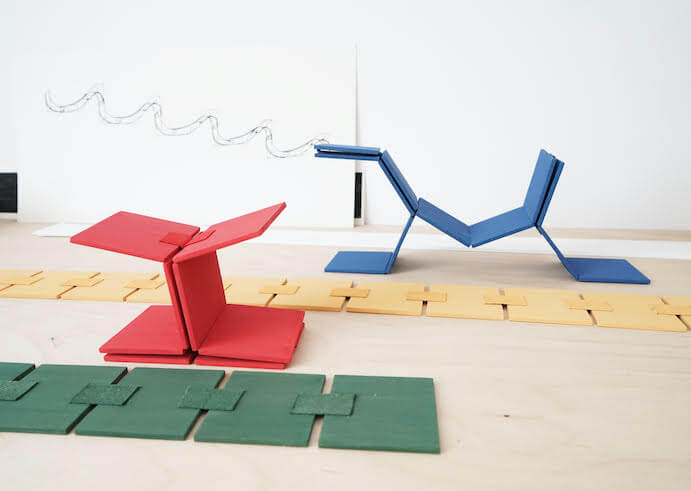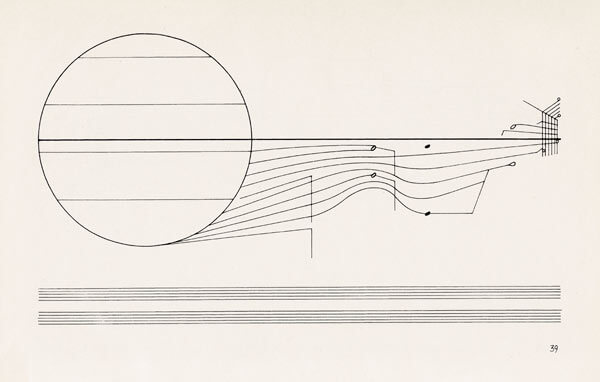“Casting Light” is a 10-part series that explores the often invisible inequities in contemporary arts spaces. Commissioned by ACF and I CARE IF YOU LISTEN, the goal of the series is to highlight the conversations that we need to be having more openly and transparently in order to build diverse, inclusive, and equitable artistic communities. Building on our commitment to anti-racism, a culminating collection of these articles and other resources will be shared for continued learning and dialogue.
In every area of his career, Dylan has had to consider his ADHD and anxiety alongside his literary dreams. For years, he has edited not only his own writing, but also his opportunities, foregoing residencies and retreats so he wouldn’t need to adjust to a new social dynamic on short notice. He moved away from New York after only a year because he felt he could never “say the right things or be able to keep up with the 80-hour-a-week lifestyle.” When he decided to earn an MFA, he applied to just two nearby programs, where he’d already sat in on classes to ensure they wouldn’t be too “cutthroat.”
“I definitely feel like I’ve missed out on a lot of opportunities (or screwed them up) because of having the wrong sort of brain,” said Dylan, whose name has been changed. “I certainly would not have gotten into a place like Iowa, but I also knew I’d have fallen apart there, because I don’t do well with social performance.”
Dylan’s experience shrinking down his aspirations is one shared by many other neurodivergent creatives. Depending on definitions, between one in five and one in seven people are neurodivergent, a term that was initially created to refer to autism but has since been expanded to include many other types of brain-based difference, including ADHD, dyslexia, dyscalculia, and dyspraxia, a condition affecting motor function. Some advocate including OCD, depression, and certain types of memory loss on the list. Regardless of scope, the effects are the same: such people often encounter difficulty navigating educational and professional environments designed for neurotypicals, or people without such neurological differences. That impacts engagement and earnings; lifetime employment rates for neurodivergent people are estimated to be as low as six percent.
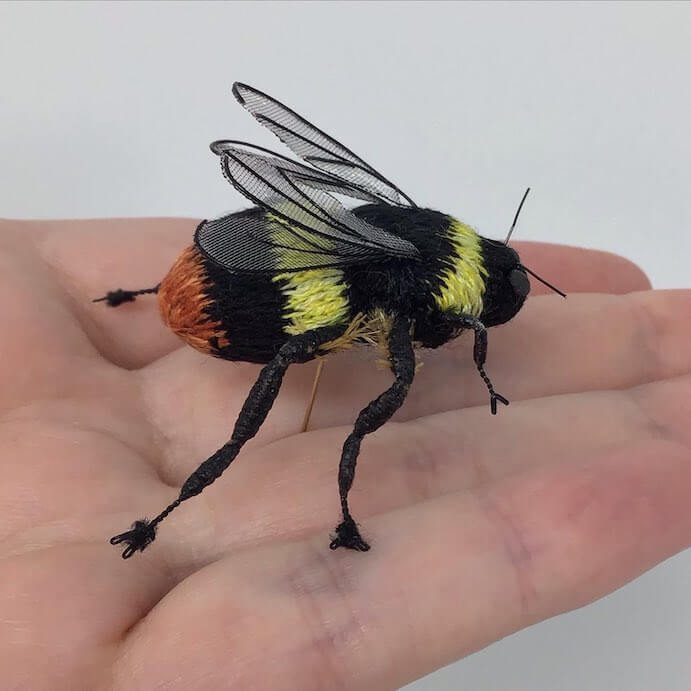
Neuk Collective member Tzipporah Johnston, Early Bumblebee, 2021, stumpwork embroidery–Image courtesy of the artist
Today, neurodivergent creatives are working to change this scenario by gathering data and making recommendations for individual artists and arts organizations that have not already made adequate steps toward inclusion. These new learnings are a resource increasing neurodivergent engagement and success through institutional change. According to a 2021 report by Neuk Collective, a collective of neurodivergent artists in Scotland, the top three obstacles facing such creatives are “financial insecurity, challenges in social settings, and difficulties with administrative tasks”–all phenomena created by societal norms and structures. At a concrete level, this could translate to difficulty completing sufficient commissions to earn a living because of increased needs for down time, confusion about how to communicate at workshops, or challenges organizing and sending invoices.
Addressing these financial, social, and administrative obstacles in creative spaces can ensure that people like Dylan have equal access to opportunities in the future.
Some best practices have been recommended by multiple neurodivergent-led advocates like Neuk Collective. These include prioritizing clear language in grant assignments and applications, offering extended and flexible deadlines, providing liaisons to ease interaction with neurotypicals, and facilitating post-performance recovery through paid time off and quiet break sites. Others suggest recruiting neurodivergent creatives to spearhead the formation of neurodiversity policies that would join existing diversity policies on race, gender, and other areas of difference. Ideas to improve the day-to-day operations of arts organizations for staff and the artists they serve include enhancing access to therapists and counsellors, hosting regular staff training on neurodivergent needs, and making calls for proposals available simultaneously in writing, audio, and video.
One broad area of agreement is a need for funding that is easy to access. Much of the capital that fuels the arts is funneled through grants, which often require long and confusing applications. Jon Adams, the founder of Flow Observatorium, a neurodivergence advocacy group in England, said he was only able to win a grant from England’s Arts Council with the help of a neurotypical ally, who navigated the notoriously finicky application portal.
“There are a lot of unwritten rules, and you have to read between the lines and you almost have to become an expert in second guessing,” said Adams, who identifies as autistic, dyslexic, and synesthetic. “Unfortunately a lot of neurodivergent people are so straightforward they can’t do that.”
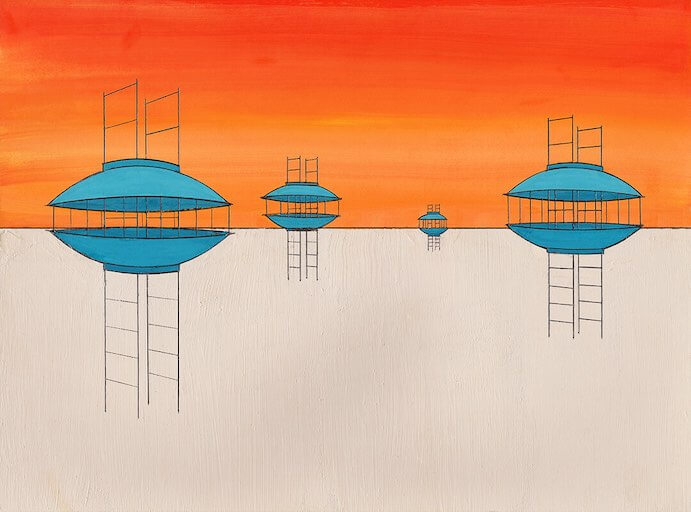
Neuk Collective member Dylan Esposito, Flying Saucer Playground, 2021. Pencil, Gouache & Acrylic on paper–Image courtesy of the artist
Adams, whose group is currently compiling data on the state of neurodivergent creatives in England, recommends two solutions. To reduce reliance on grants, creatives could benefit from a universal basic income, a measure that has been trialled in locations from Kenya to Iran and been recommended by proponents ranging from the economist Milton Friedman to former US Secretary of State James Baker. Adams also recommends the launch of funding streams specific to neurodivergent individuals. That would naturally involve identifying as neurodivergent, which could help enhance visibility of neurodivergent artists, another item on the wish list of some surveyed individuals.
Yet other artists have expressed concern about being ghettoized for their conditions–either by having their work perceived as less valuable, or by being restricted to making work only about neurodivergence, similar to ways other minorities can be pressured to focus on their traumas as a theme.
“I have concerns that labelling oneself a ND artist restricts market access,” wrote one respondent to Neuk Collective’s survey. “This isn’t due to any shame associated with autism but the stigma people attach to disability & the way in which the art world uses disability as a marketing tool, resulting in lower market value of work or categorising as outsider & only including them within outsider or disability exhibitions.”
Past assumptions that minority groups are monolithic have resulted in failures to create truly equitable environments, according to Katie Maras and Jade Norris of the Centre for Applied Autism Research at the University of Bath.
“Traditional initiatives surrounding diversity focus on categorisations of individuals into groups such as gender, ethnicity, or religious affiliation, with policy solutions that apply broad-brush interventions for categorical differences,” write Maras and Norris in a report on autistic access to public services. “It has been questioned, however, whether such policies effectively address diversity as a full continuum, including dimensions of diversity that are neither immediately obvious nor inherently collective–such as neurodiversity.”
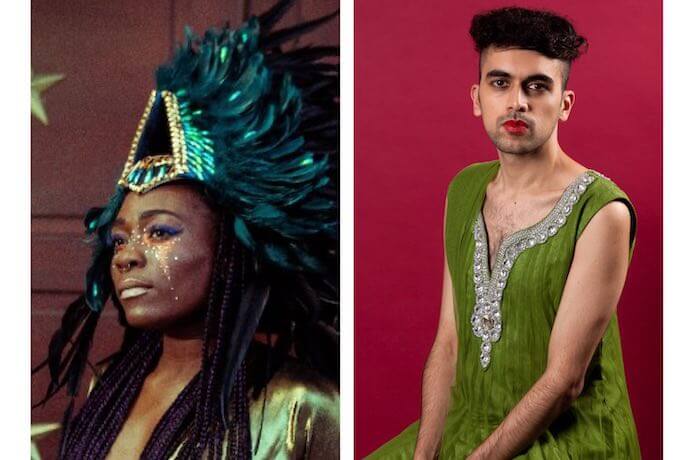
Rachael Young (Photo by Marcus Hessenberg) and Vijay Patel (Photo by Holly Revell) of the Freelance Task Force at Fuel
Flexibility is essential to this tailored approach, according to Vijay Patel and Rachael Young of the Freelance Task Force at Fuel, a theatre and performance production group based in London. Among the neurodivergent creatives Patel and Young surveyed, many reported that even if they chose to vocalize their needs, they were met with resistance.
“Many have voiced concerns that they feel that ‘they are the problem,’” Patel and Young write in an open letter to arts institutions signed by more than 30 groups across the UK. “This has sometimes been met with some hostility when the person voices the barriers. An organisation should offer alternative ways of doing a task, to promote accessible working methods, boost self-esteem and limit the emotional labour on the neurodivergent person.”
One area both Neuk Collective and Flow Observatorium flagged for further study was the intersection of neurodivergence with other types of “outsider” identity: gender identity, sexuality, race, and more. Autism, for example, remains less diagnosed in non-white and non-male populations, despite rising numbers of women receiving diagnoses as adults after being ignored as children, as well as multiple studies showing that the descendants of refugees are at higher risk of autism than their white counterparts.
Dylan is one individual who falls into multiple marginalized groups. But in spite of barriers, his story has a happy ending. After working on a set of short stories for a decade, he sold his collection to a publisher. He is now working on a novel about a young survivor.
I CARE IF YOU LISTEN is an editorially-independent program of the American Composers Forum, funded with generous donor and institutional support. Opinions expressed are solely those of the author and may not represent the views of ICIYL or ACF.
A gift to ACF helps support the work of ICIYL. For more on ACF, visit the “At ACF” section or composersforum.org.


